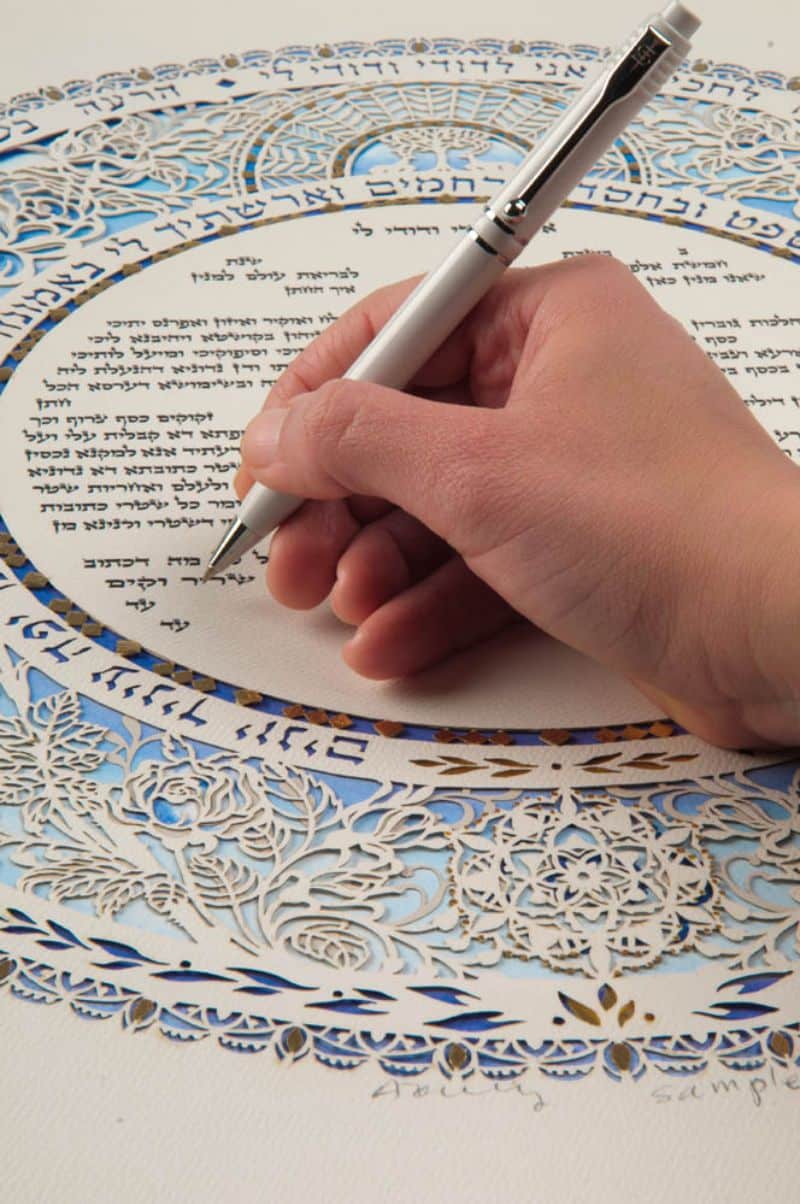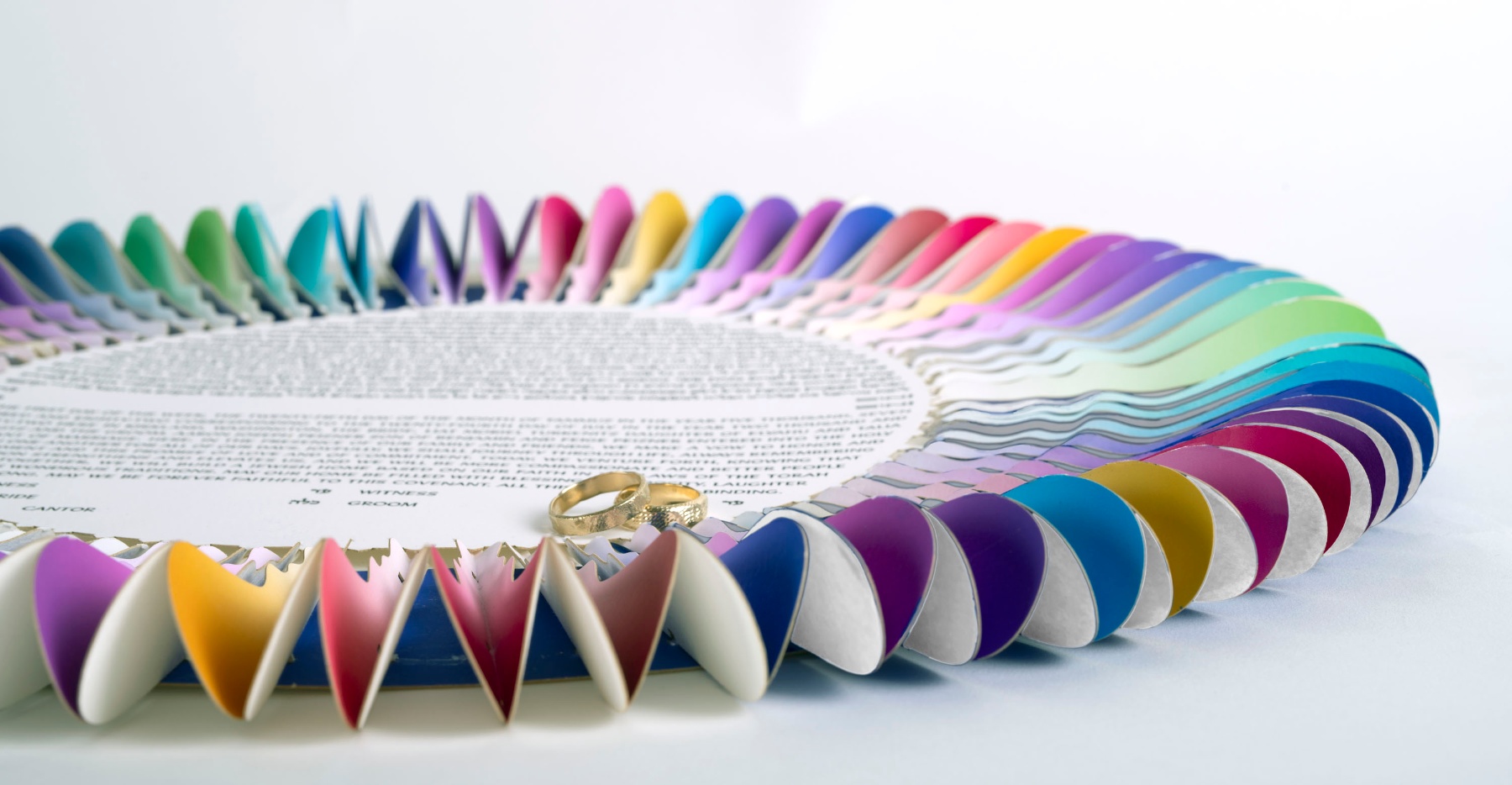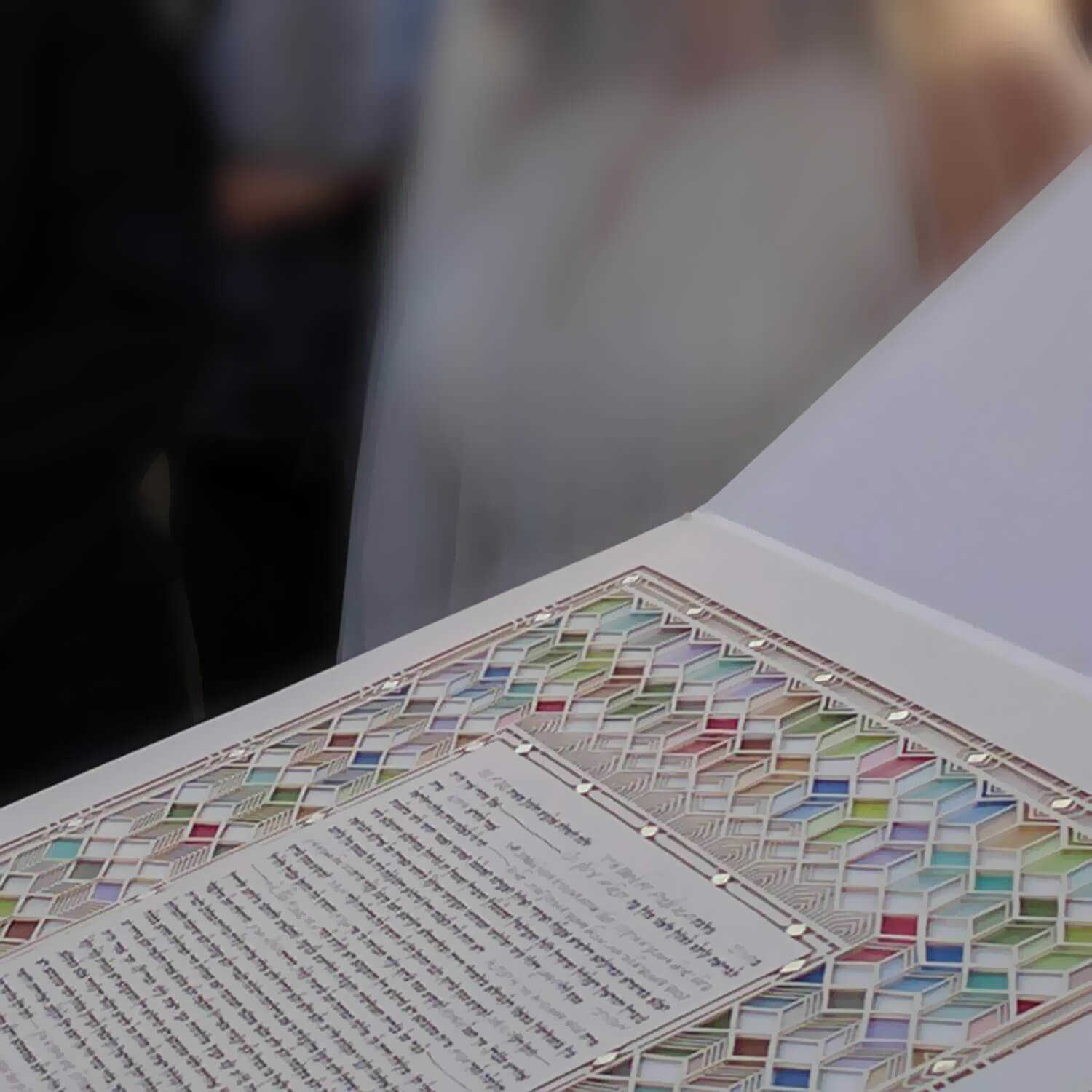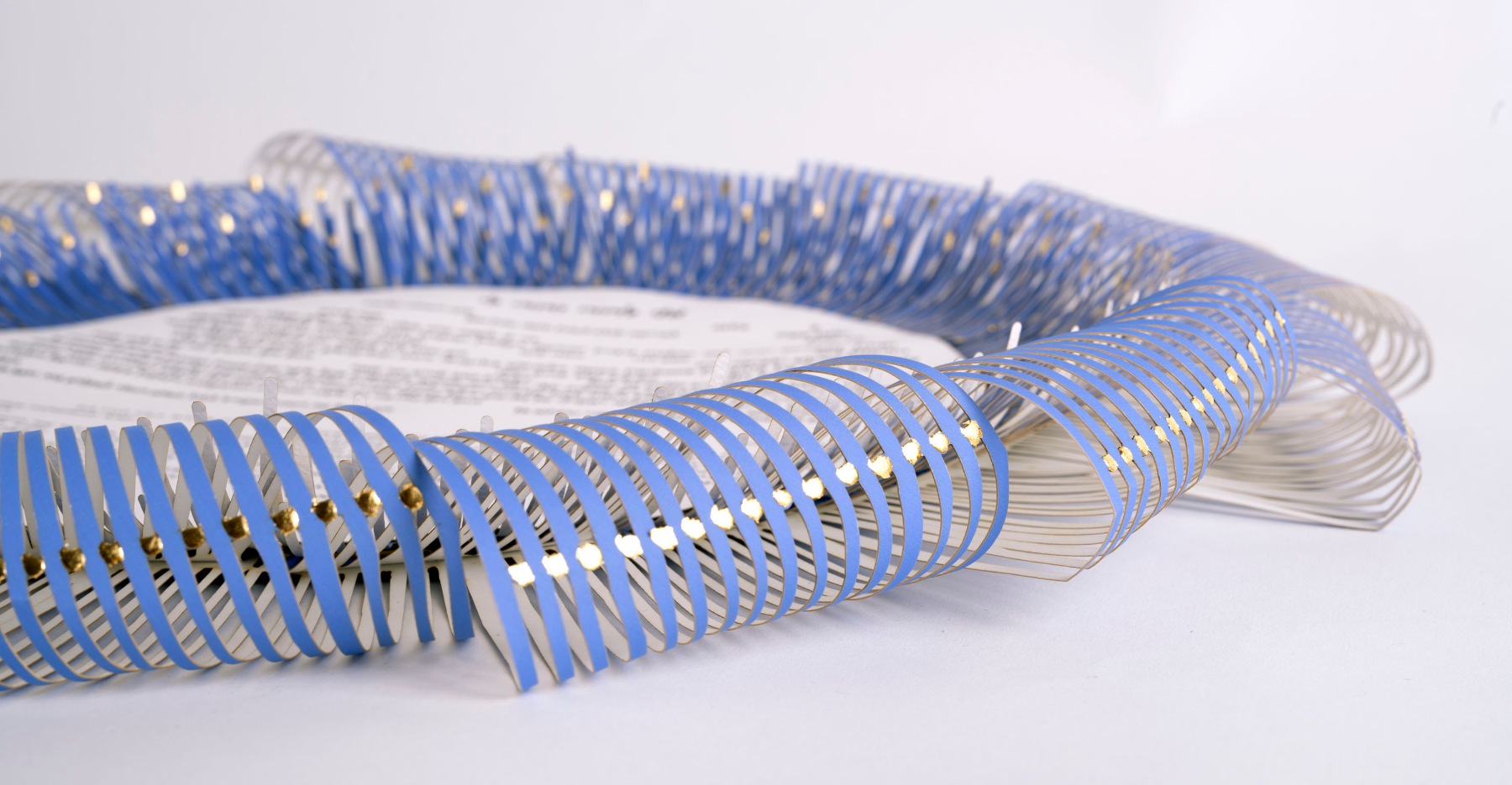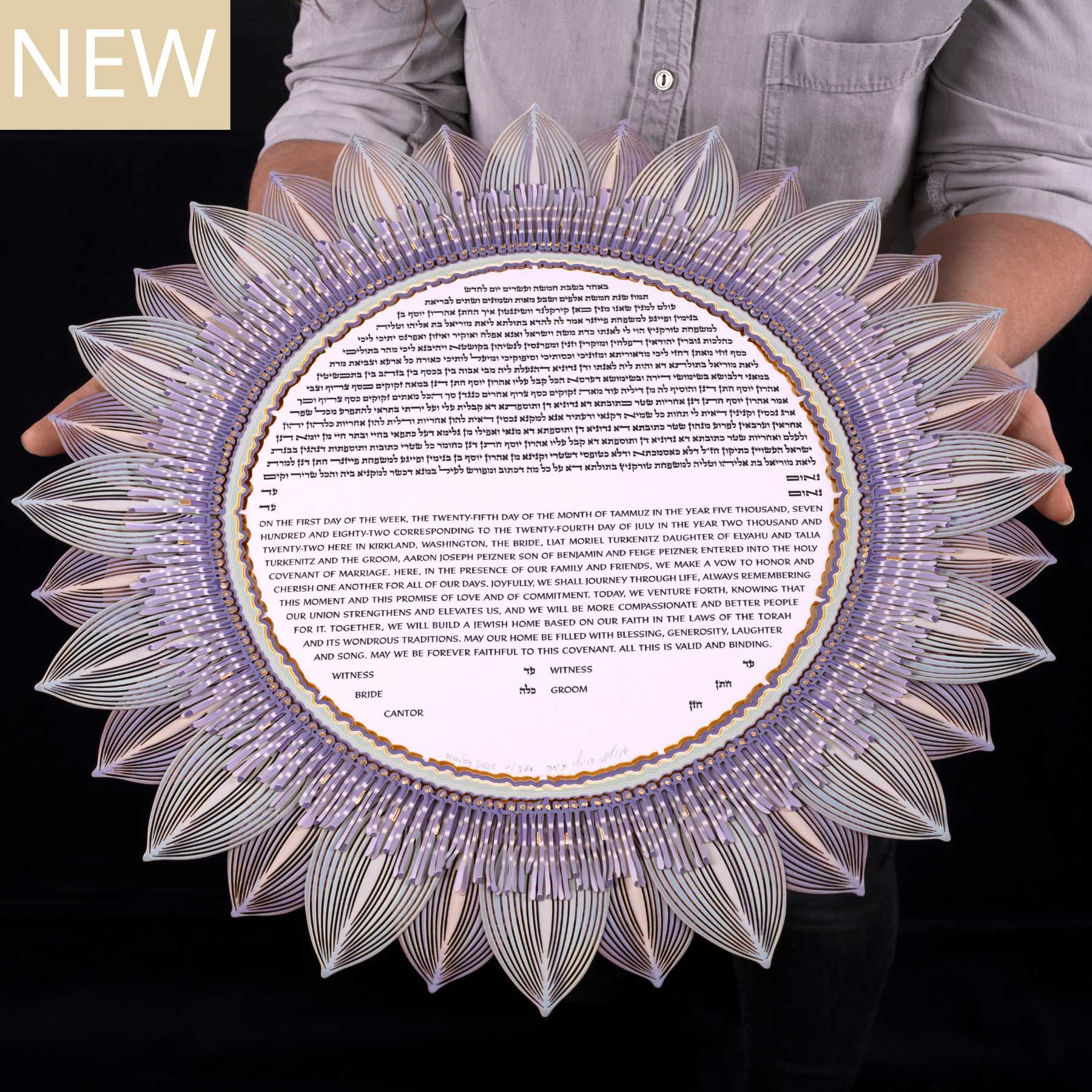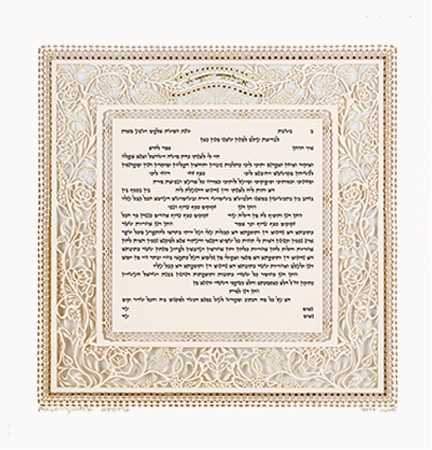Who Keeps the Ketubah? What Happens to the Marriage Contract After the Wedding

After the chuppah has been taken down and the last dance is over, many Jewish couples begin to wonder what happens to the ketubah. Jewish marriage contracts: a ketubah is more than just a beautifully decorated piece of art—it carries a deep, symbolic and historical weight.
In Orthodox and in Conservative communities, the traditional document is considered the property of the wife, in that it outlines the husband’s financial obligations and physical and emotional responsibilities toward her. Here, the ketubah functions much like other legal documents, and is intended to be available for reference should it ever be needed in a beit din (Jewish court of law).
In the Reform and Reconstructionist movement, as well as other Jewish denominations, the approach is more flexible and egalitarian. Modern couples view the ketubah as a mutual declaration of partnership and love. For this reason, it is jointly owned by both partners.
It’s important to remember that while the ketubah is part of the legal and ceremonial fabric of the wedding day, it continues to carry significance throughout married life. Whether kept in a drawer, framed on a wall, or stored safely in the bride’s mothers home, the ketubah serves as a reminder of the vows exchanged, the values shared, and the home built together. For any married couple, deciding who keeps the ketubah isn’t just a logistical choice—it’s a conversation about intention, respect, and what this sacred text represents. For a wedding couple, it can even mark the beginning of a deeper understanding of partnership, responsibility, and mutual care.
Where and How to Store the Ketubah Safely
While many couples choose to frame and display their beautiful ketubah as a central piece in their home, others prefer to store it safely—either for preservation or personal reasons. Whether you have chosen a modern ketubah with abstract art or the aesthetics of traditional ketubahs, proper storage is essential for protecting both its symbolic and material value. After all, ketubahs are not only spiritual documents rooted in Jewish wedding ceremonies, but also works of art crafted with skill and intention.
For those who choose not to frame their beautiful piece, storing it in a dry, dark, and UV-protected location is key. Like other important paper-based items, paper ketubahs are susceptible to fading, warping, and deterioration over time if exposed to direct sunlight, humidity, or fluctuating temperatures. The best way to ensure long-term preservation is by using an acid-free archival folder, which shields the ketubah from environmental factors while maintaining its integrity. Another option is placing it inside a fireproof safe—especially valuable for those who consider their Jewish wedding ketubahs heirlooms or historical records of their families.
Couples who opt for a Reform ketubah, which may reflect personalized vows or spiritual values rather than strict halachic content, often treat the ketubah as a cherished document blending tradition and individuality. In such cases, storing it in a climate-controlled cabinet within the home can provide both easy access and protection. With an abundance of design options– whether it’s papercut ketubah with intricate design or a modern design bursting with color and symbolism– the key is to treat the ketubah with care, dignity, and the understanding that it represents more than just paper—it embodies love, covenant, and commitment.
From Signing to Display: Giving Your Ketubah the Space It Deserves
For many interfaith couples, the interfaith ketubah signing is a deeply meaningful milestone that symbolizes far more than a formality. It represents the union of backgrounds, beliefs, and families—often merging different spiritual paths into one shared life. In this context, the interfaith ketubah is more than a document; it’s a commitment, a covenant, and often a piece of artwork that embodies the unique journey of the couple. Once signed, the interfaith ketubah deserves a place of honor in the home—not just for aesthetic reasons, but as a tangible reminder of the promises made.
The design of the ketubah often reflects the nature of the relationship. Some couples opt for a ketubah papercut, intricate and delicate, reflecting the fine balance of mutual respect and partnership. Others choose a minimalist or modern layout that mirrors their clean, contemporary lifestyle. Regardless of design, the framing and placement of the ketubah should reflect its dual role as both a sacred text and a piece of personal history.
Where to display it is entirely up to the couple. Many choose high-visibility areas like entryways or living rooms where guests can appreciate its beauty and meaning. Others prefer more private spaces, like a bedroom or a study, where the ketubah can serve as a quiet daily affirmation of shared values and enduring love.
A distinctive feature of many interfaith ketubot is the inclusion of multiple languages. An English translation ensures accessibility, while a Hebrew translation or Aramaic translation connects the text to longstanding Jewish traditions. This multilingual nature adds depth, making the ketubah not just a decorative element but a bridge between heritages.
Ultimately, displaying your ketubah is a celebration. It tells your story—one of unity, choice, and a future built together with intention.
Choosing the Right Ketubah: Art, Meaning, and Lasting Beauty
Selecting the right ketubah is one of the most personal and memorable decisions a couple makes in the lead-up to their wedding day. Beyond its role in the ceremony, a beautiful ketubah becomes part of your home, your story, and your shared journey. For those seeking something truly special, Danny Azoulay ketubahs offer a seamless blend of artistic traditions, craftsmanship, and heartfelt design. An acclaimed artist, known for their limited-edition ketubahs, each piece is created using fine art paper, exquisite detail, and timeless artistic styles that reflect both heritage and modern sensibilities.
Whether you’re looking for a Modern Ketubah with sleek lines or something rooted in classic artistic reproductions, Azoulay’s collection is known for its balance between tradition and innovation. These are not just legal or ceremonial documents—they’re beautiful artwork worthy of framing, preserving, and celebrating. Many couples also choose one of these ketubot as a lovely gift for a sibling or close friend beginning their own marital journey.
Ultimately, your ketubah should feel like an extension of who you are as a couple. Choosing an artist with a reputation for integrity, sensitivity, and visual storytelling ensures that the ketubah remains meaningful long after the ketubah signing ceremony. In this light, exploring the works of Danny Azoulay ketubahs is more than a recommendation—it’s an invitation to begin your marriage with intention, beauty, and lasting elegance.


